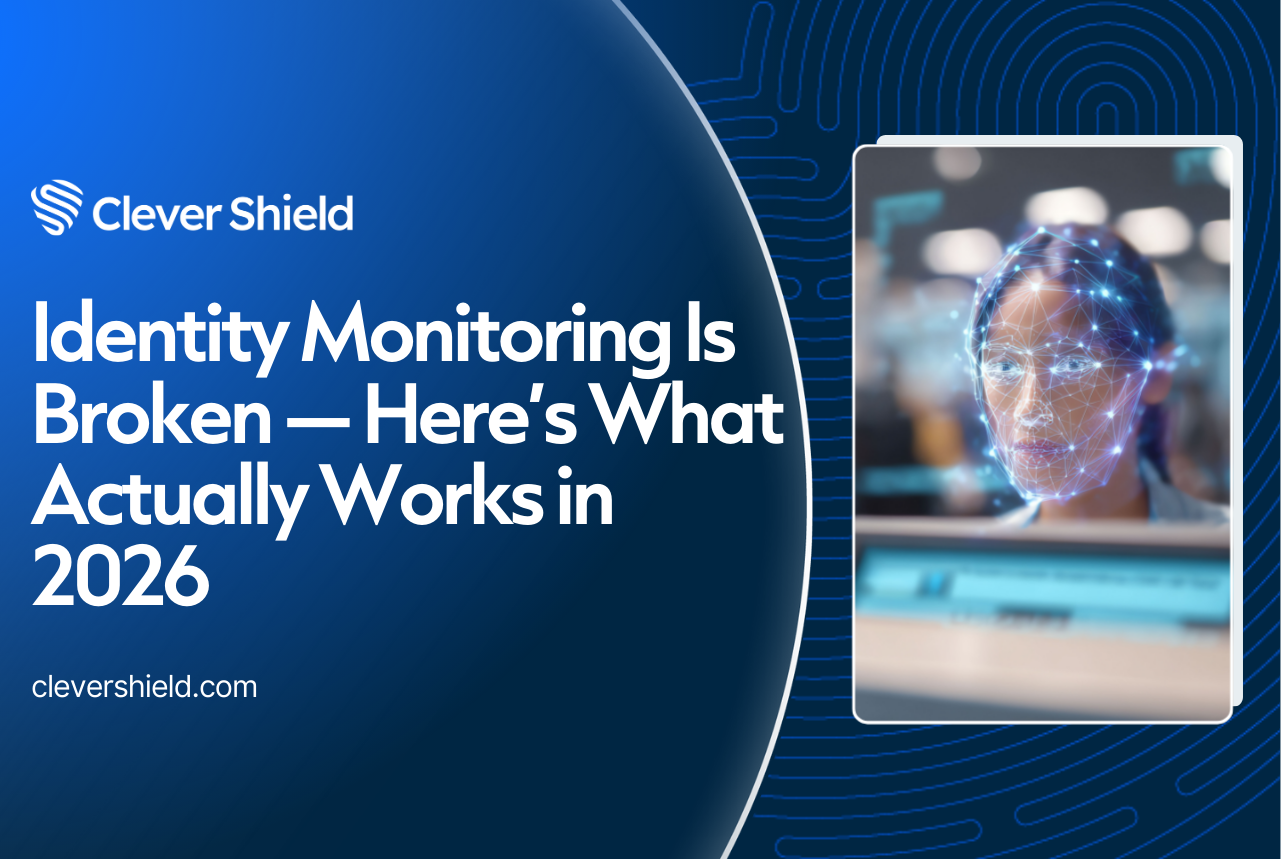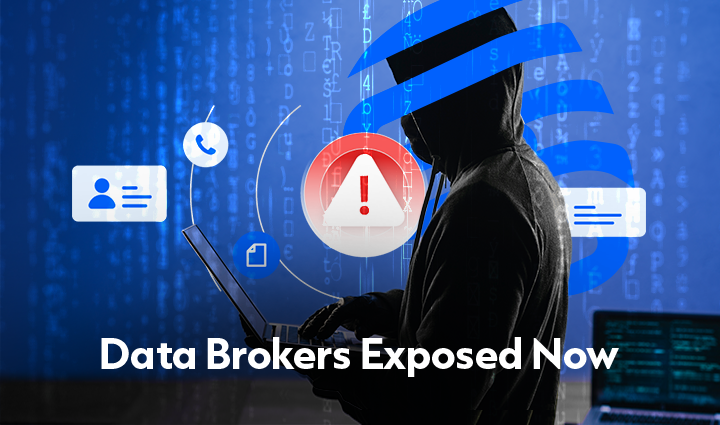Worried about data breach identity theft? Data breaches expose your sensitive information to cyber criminals, leading to identity theft. In this article, you’ll find out how breaches happen, how they lead to identity theft, and immediate steps to protect yourself.
Key Takeaways
Data breaches expose sensitive information, which can be exploited for identity theft and various forms of fraud.
Recognizing early signs of identity theft, such as unusual account activity and discrepancies in credit reports, is crucial for timely intervention.
Proactive measures like changing passwords, placing fraud alerts, and utilizing identity protection services are essential to safeguard personal information and mitigate risks.
Understanding Data Breaches and Identity Theft
Data breaches and identity theft are more than just buzzwords; they represent a significant threat to our personal and financial security. When a data breach occurs, sensitive information such as Social Security Numbers, addresses, and financial details can be data exposed to unauthorized individuals. This compromised data becomes a goldmine for identity thieves who exploit it to commit various forms of fraud.
What is a Data Breach?
A data breach is an incident where unauthorized individuals gain access to confidential or sensitive information. These breaches can result from phishing attacks, unpatched software vulnerabilities, malware, or even simple human error. Once a breach occurs, personal information exposed can be misused by cyber criminals to commit identity theft and other fraudulent activities. If the security measures are not properly implemented, the data can be breached, leading to serious consequences.
Phishing, for instance, is a common tactic where hackers deceive individuals into providing their sensitive information, which is then used maliciously. Whether through deliberate attacks or unintentional oversight, data breaches pose a significant risk to personal and financial security.
How Identity Theft Happens
Identity theft occurs when someone illegally uses your personal or financial details without your consent. Data breaches often lead to the theft of personal information such as names, Social Security Numbers, addresses, and phone numbers. Cyber criminals often purchase this stolen information from the dark web to commit various fraudulent activities.
The exposed personal information can be used to open new accounts, file false tax returns, and make unauthorized transactions, leading to significant personal and financial information loss and complications for the victims. This highlights the importance of taking proactive steps to protect your identity and prevent identity theft.
The Impact on Individuals
The impact of identity theft on individuals can be devastating, often taking months or even years to fully resolve. Victims may find themselves receiving bills for purchases they didn’t make or discovering unauthorized transactions on their bank statements. These signs are clear indicators that your identity may have been compromised.
Moreover, the IRS provides specific resources to address tax-related identity theft, offering guidance on how to report and prevent such incidents. The prolonged recovery time and financial strain caused by identity theft underscore the necessity of vigilant monitoring and protective measures.
Recognizing the Signs of Identity Theft
Recognizing the signs of identity theft early can significantly mitigate its impact. Unusual account activity, suspicious communications, and discrepancies in your credit report are key indicators that your personal information may have been compromised.
Staying vigilant and proactive can protect your business from further harm while also protecting you from potential risks.
Unusual Account Activity
One of the first signs of identity theft is unusual activity in your bank accounts, which can include notifications about new accounts opened in your name or unauthorized transactions on your bank statements, as well as suspicious activity involving money.
Regularly monitoring your credit reports can help you detect these unauthorized activities early and take swift action to protect your financial security.
Suspicious Communication
Unexpected emails, phone calls, or text messages requesting personal information may indicate phishing attempts or other fraudulent activities. Cyber criminals often use these tactics to deceive consumers into revealing sensitive information, which can then be used to commit identity theft.
Always be cautious of unsolicited communications and verify their authenticity before responding.
Credit Report Discrepancies
Regularly checking your credit report and credit file for unfamiliar entries or discrepancies is crucial in identifying potential identity theft. Unfamiliar accounts or incorrect personal information on your credit report can be a sign that your identity has been compromised.
By monitoring your credit regularly, you can detect and address fraudulent activities early, minimizing their impact.
Immediate Steps to Take After a Data Breach
If you suspect your personal information has been exposed in a data breach, it’s crucial to act swiftly to protect yourself from further harm. Taking immediate steps such as changing your passwords, placing a fraud alert, and considering a credit freeze can prevent identity thieves from exploiting your information.
Change Your Passwords
The first step after a data breach is to change your passwords for affected accounts. Use strong, unique passwords and consider enabling two-factor authentication for added security.
Utilizing a password manager can help you create and store strong passwords securely, reducing the risk of future breaches.
Place a Fraud Alert
To prevent new accounts from being opened in your name, follow these steps:
Place a fraud alert on your credit report.
Contact one of the major credit bureaus to set the alert.
The bureau you contact will notify the others automatically.
This alert usually lasts a year and ensures lenders take extra steps to verify your identity before granting credit.
Consider a Credit Freeze
A credit freeze provides an additional layer of protection by stopping new accounts from being opened in your name. Contact each of the major credit bureaus individually to implement a credit freezes.
This measure significantly reduces the risk of identity theft by making it harder for thieves to access your credit report and open new accounts.
Long-Term Strategies for Identity Protection
Implementing long-term strategies for identity protection is essential to safeguard your personal information from future threats. Regularly monitoring your credit, using identity theft protection services, and securing your online accounts are crucial steps in this process.
Monitor Your Credit Regularly
Regularly monitoring your credit reports can help you detect identity theft early and take necessary actions to prevent further damage. Many identity theft protection services offer credit monitoring features that track changes to your credit score and report, providing early alerts of suspicious activities.
Use Identity Theft Protection Services
Identity theft protection service like Clever Shield offers comprehensive monitoring and alerts to help protect your identity. These services can monitor the dark web for your personal information, provide early alerts, and offer guidance for recovery, significantly reducing the risk of identity theft.
Secure Your Online Accounts
Using strong, unique password and secure browsing practices is essential to protect your online accounts from identity thieves. Consider the following:
Use a password manager to create and store strong passwords securely.
Adopt secure browsing practices such as using HTTPS.
Avoid public Wi-Fi for sensitive transactions.
How Clever Shield Can Help You
Clever Shield is an advanced identity protection and monitoring platform designed to safeguard your personal information from data breaches and identity theft. With features such as automated data removal, real-time monitoring, and $1 million identity theft insurance, Clever Shield provides comprehensive protection and peace of mind.
Automated Data Removal
Clever Shield automatically scans and eliminates personal information from data brokers and resellers within a day, reducing the risk of exposed personal information being exploited. This automated data removal process provides peace of mind by swiftly addressing risks associated with exposed personal information.
Real-Time Monitoring
Clever Shield offers real-time monitoring of sensitive personal information, including Social Security Numbers, emails, phone numbers, and banking details. This real-time monitoring capability quickly alerts you to potential fraud, allowing you to take swift action to mitigate any damage.
$1 Million Identity Theft Insurance
Clever Shield provides up to $1 million in identity theft insurance, offering financial protection against losses incurred due to identity theft. This insurance coverage ensures that you are financially protected and can recover from identity theft-related expenses with peace of mind.
Related Resources and Further Reading
Leveraging additional resources can greatly enhance your understanding and management of identity theft risks. Trusted non-competitor sources like FTC Identity Theft, IRS Identity Theft Central, and AARP Fraud Watch Network™ offer valuable guidance and support for your organizations and company.
FTC Identity Theft Guide
The FTC’s Identity Theft Guide is a comprehensive resource that provides:
Steps for victims of identity theft to recover and protect themselves
Crucial information on how to report identity theft
Guidance on creating a recovery plan
Steps to prevent future occurrences
IRS Identity Theft Central
The IRS Identity Theft Central webpage offers specific guidance on handling tax-related identity theft, including how to report it and what to do if your identity has been stolen for tax purposes. This resource is invaluable for individuals dealing with tax-related identity theft, providing clear steps and support.
AARP Fraud Watch Network™
The AARP Fraud Watch Network™ provides valuable resources focused on preventing fraud targeting older adults. It offers educational materials and alerts to help older adults recognize and prevent various scams, including identity theft and phishing.
Summary
In summary, understanding and protecting against data breaches and identity theft is crucial in today’s digital age. By recognizing the signs of identity theft, taking immediate action after a data breach, and implementing long-term protective strategies, you can safeguard your personal and financial information from cyber criminals. Utilizing services like Clever Shield can provide comprehensive protection and peace of mind, ensuring that your identity remains secure.
Remember, staying vigilant and proactive is key to preventing identity theft. Equip yourself with the knowledge and tools necessary to protect your identity and personal information, and take action today to secure your digital life.
Frequently Asked Questions
How much do you get for a data breach lawsuit?
In data breach lawsuits, settlements usually range from $50 to $500 per person, with potential for higher amounts if you can demonstrate documented harm. Your specific compensation will depend on the circumstances of your case.
What is a data breach?
A data breach occurs when unauthorized individuals access confidential or sensitive information, which can result in identity theft and fraud. This underscores the importance of safeguarding personal and organizational data.
How can I recognize the signs of identity theft?
To recognize signs of identity theft, watch for unusual account activity, unexpected communications, and discrepancies in your credit report. Being vigilant about these indicators can help you take action quickly.
What immediate steps should I take after a data breach?
Immediately change your passwords, place a fraud alert on your accounts, and consider a credit freeze to mitigate potential damage from the breach. Taking these steps can help safeguard your personal information effectively.
How can I protect my identity in the long term?
To protect your identity in the long term, regularly monitor your credit and utilize identity theft protection services while ensuring your online accounts are secured with strong passwords and safe browsing habits. Implementing these practices can significantly reduce your risk of identity theft.







